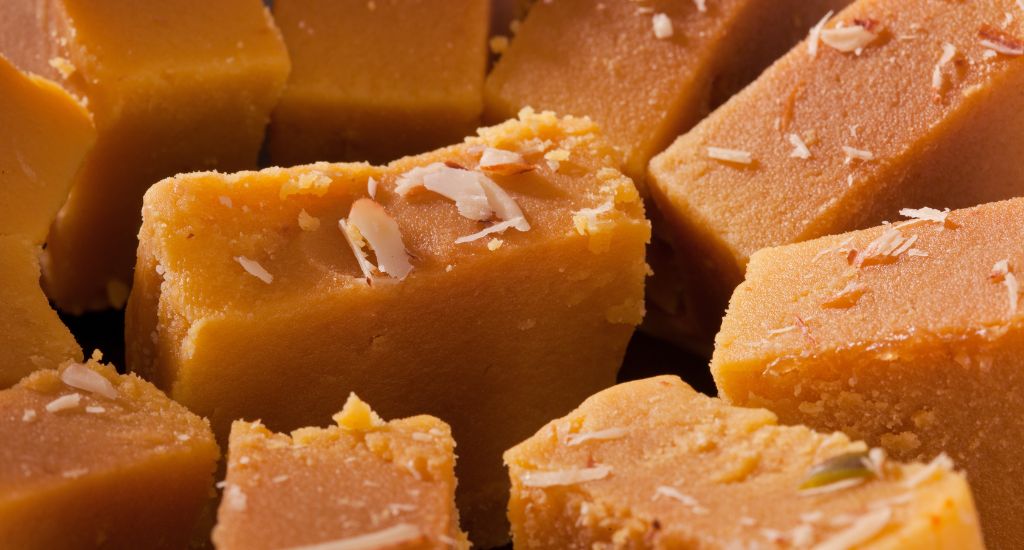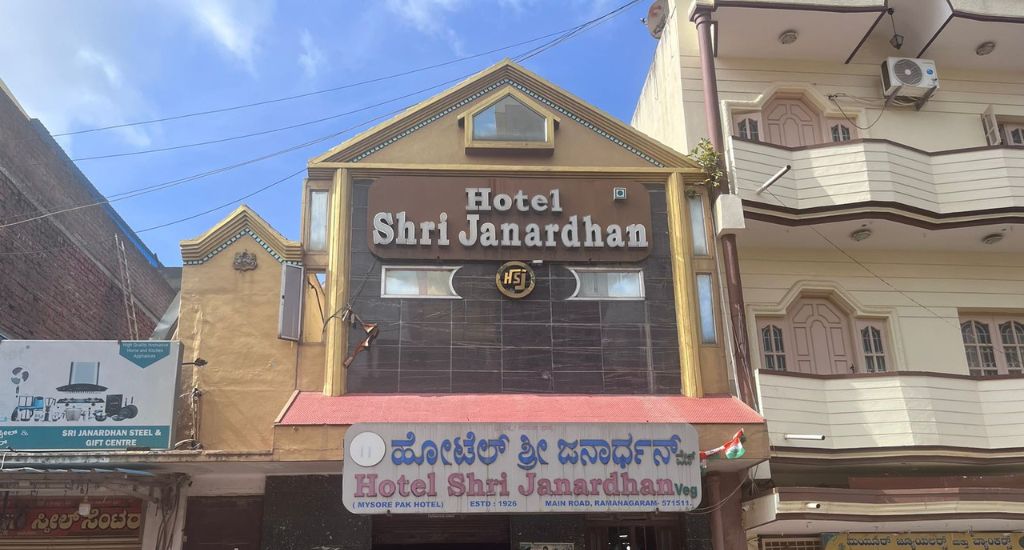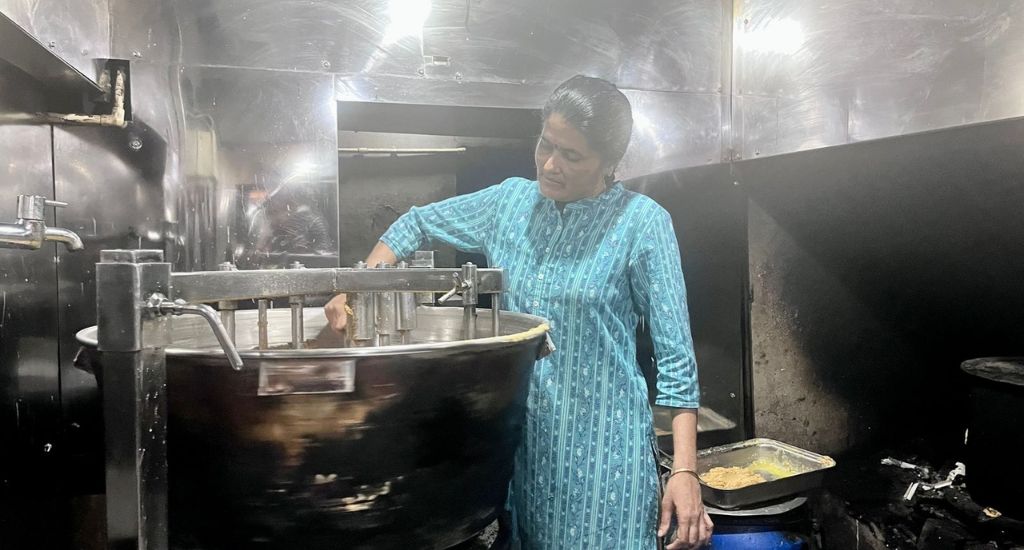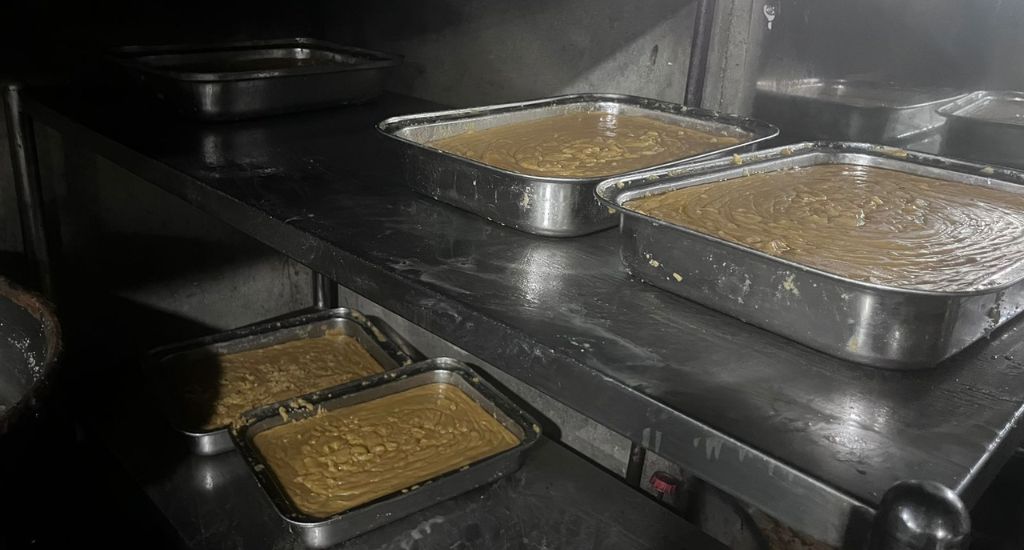
Ramanagara’s 100-year-old Mysore pak hotel
Shri Janardhan Hotel, founded in 1926 and famed as “the Mysore pak hotel”, is a culinary icon in Ramanagara for confecting the beloved Mysore pak sweet to perfection the traditional way every day

Shri Janardhan Hotel, founded in 1926 and famed as “the Mysore pak hotel”, is a culinary icon in Ramanagara for confecting the beloved Mysore pak sweet to perfection the traditional way every day
If you are a traveller with a “pucca” (strong) sweet tooth, a pakka (must) stop in Ramanagara is a must on the Bengaluru-Mysuru highway. For, in this bustling town – a mere 48km southwest of Bengaluru and 94km from Mysuru – the Kannada confectionary legacy of “Mysore pak” has transcended time.
The pit stop be? Shri Janardhan Hotel – steeped in history since its inception in 1926 and standing right in the nub of Ramanagara, the very town known for its sericulture, exquisite Mysore silk saris, and Sholay. Remember Gabbar’s den in the rugged, rocky hills? It was shot in Ramadevara Betta – a few miles detour from the township. Renamed “Sholay hills” by the 1975 Bollywood blockbuster’s legions of fans, it’s a tourist attraction now.
However, the one thing that draws true epicureans to Ramanagara is the Mysore pak of Shri Janardhan Hotel. Locally, it has affectionately come to be known as the “Mysore pak hotel” due to the widespread adoration of its signature confection.
“Shri Janardhan Hotel’s Mysore pak is an absolute favourite of my son. To maintain that connection to home, I ensure that I regularly send this treat to him. What truly sets it apart is its uniqueness and irresistible flavour. Whenever he visits home, he makes sure to bring an extra box for his friends abroad,” said Arti, whose son has relocated to Japan.

The guardians of this sweet tradition are none other than Prashant and his wife Gayathri, the third-generation proprietors, whose unwavering commitment ensures that every batch of Mysore pak is an authentic representation of its rich heritage.
The journey of Prashant as the custodian of this culinary heritage is a tale that began with his father Parameshwaraiah. At the tender age of 19, Parameshwaraiah took the reins of the hotel, marking the start of his lifelong commitment to this tradition.
Also Read: How Kud has become Kashmir’s sweet-making powerhouse
Yet, the roots of this culinary legacy reach further back to Prashant’s grandfather who, after migrating from South Canara, settled in Mandya. It was in Mandya that he acquired the art of making Mysore pak under the tutelage of a seasoned teacher.
Circa 1935. A sweet innovation unfolded within the splendid Amba Vilas Palace in Mysore, ruled by Maharaja Krishnaraja Wodeyar. As the royal kitchen buzzed with activity, chef Kaksura Madappa faced the challenge of creating an extraordinary dessert for the king’s lunch.

With time ticking away, Madappa combined ghee, gram flour, and sugar to create a fudge-like sweet. The king was captivated and asked for its name. Madappa, thinking on his feet, named it “Mysore paka”.
Over time, this confection – “paka” in Kannada means a sweet concoction – came to be known as Mysore pak, and became a beloved dessert throughout the Indian subcontinent and among the diaspora.
The Mysore pak of Shri Janardhan Hotel derives its charm from its simplicity. It remains untainted by artificial additives or flavour enhancers. In this era of automation, the confectionery gracefully marries tradition with modernity. While the sweet was traditionally handcrafted, Prashant and Gayathri have adeptly integrated modern technology into their production process.
The secret to the enduring fame of their Mysore pak is disarmingly simple: unwavering adherence to their grandfather’s time-honoured recipe, with an uncompromising commitment to quality.
At the heart of their magic lies a cooking vessel known as “Hittale”. This has been in use since Prashant’s grandfather’s era. It is believed that using this brassware enhances the flavour of the sweet, and a fresh batch is prepared within it every day.
Watch: The sweet story of Kolkata’s Rabrigram

Achieving the right consistency of sugar syrup is a pivotal aspect of perfecting Mysore pak. Turmeric is infused into the syrup, and once it attains the desired stage, dry gram flour or besan is incorporated. Subsequently, ghee is added, with precise measurements using traditional vessels.
“Getting the timing right is crucial to achieving the perfect Mysore pak,” said Gayathri, explaining that overcooking or undercooking can dramatically impact the final flavour and texture.
Demand surges during the festive seasons of Dussehra and Diwali, as it has become a cherished tradition for many to savour or give this treat as a gift during these special occasions. A piece of this traditional sweet typically fetches a modest Rs 50, with the option to purchase it by weight at approximately Rs 960 a kilo.

“I frequently procure Mysore pak from various sources, but there’s something undeniably exceptional about this sweet crafted here. It’s not merely about the ingredients. It’s the flawless harmony of proportions and the expertise of the artisans that create this irresistible delicacy. This establishment carries a profound legacy, and its heritage radiates in every morsel of their Mysore pak,” said Gopala, a wedding caterer from Mysuru.
Even prominent figures, such as Kannada actors and politicians — including SM Krishna, Ambarish, Vishnuvardhan, and Shiva Rajkumar — have been counted among the patrons of this establishment. In fact, Karnataka Chief Minister Siddaramaiah once urged the Karnataka Milk Federation to master the art of making Mysore pak as perfected by Shri Janardhan Hotel, and sell it under its Nandini brand.
Also Read: What’s Christmas in southern Tamil Nadu without these traditional treats?
The lead image at the top shows a plate of freshly made Mysore pak. (Photo taken from Shutterstock)
Apta Ramesh is a former television show producer, and presently a freelance journalist.